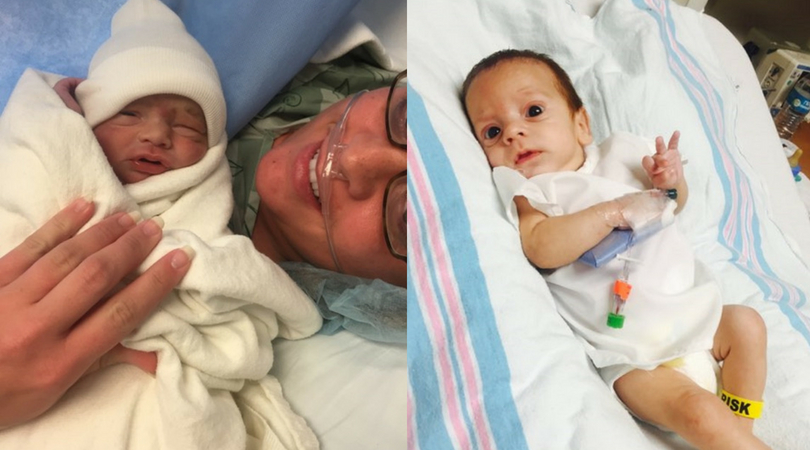“Our first-born son, Landon, was born December 19th, 2006, just around 2.5 years after we were married. We knew we wanted a big family. After losing our second child at 5 weeks old in August 2009 due to fetal hydrops, we were devastated. We never got to bring him home from the hospital. But God decided to bless us with a miracle.
I found out I was pregnant in January 2015, with my due date in September 2015. I knew there would be some concerns and risks with the pregnancy. You see, my blood type is Rh-Negative with antibodies, and the baby will have positive blood like his dad. Basically, what happens is, my antibodies recognize the baby’s positive blood as foreign and will do its job as an antibody to try to protect me and kill the blood supply of the baby. This will result in the baby becoming anemic. I did some research and found the nearest specialist with experience in these cases Dr. David Shaver from Charlotte, North Carolina. I met with him before anyone know about me being pregnant. He felt sure that we could have a healthy baby. So, at 10 weeks pregnant, we tested my antibodies to see how high they were. They were through the roof!
We needed a plan to get them down really low to give us a chance of getting our baby, Cannon, to 19 weeks gestation where we are able to give him blood if needed. I would do plasmapheresis at 11 weeks pregnant. I had a line inserted in my neck vein and went to Charlotte, North Carolina, 3 times that week. They ran my blood through a big machine, cleaned it and removed ALL antibodies. This took 3 days. They couldn’t just remove the bad ones so they have to remove them all. I was very vulnerable of catching any virus. I had to be very careful. This brought my antibodies down tremendously. Then starting at 12 weeks gestation, I underwent IVIG treatments in Charlotte.
Immunoglobulin therapy, also known as normal human immunoglobulin, is the use of a mixture of antibodies to treat a number of health conditions. Since pretty much all my antibodies were removed, we had to add more. We knew that my body would start making the bad antibodies again, but it would be at a slower rate. I did the treatments once a week for 6 weeks. Each treatment lasted anywhere from 4-8 hours, depending on how well my body handled the transfusion. We wanted to get to 19 weeks gestation to be able to give the baby blood if needed. Well, at 18 weeks, ultrasounds of the baby were done of his brain to monitor the blood flow. It showed he needed blood, and fast.
Cannon received blood by a needle being inserted into the umbilical cord. First, they would insert the needle in my belly guided by the ultrasound machine to find the umbilical cord. Once in, they drew blood from the umbilical cord and had someone from the blood bank test the hemoglobin to see how anemic the baby was and how much blood was needed. Then they would transfuse as much blood that was needed and pull it out. It was very painful.
Cannon had 7 in utero transfusions, with the last one at 31 weeks. By 32 weeks, fetal movement had stopped so a C-section was done. He was 5 pounds, 3 ounces and came out screaming, which was the best sound. Cannon was healthy and stayed in the NICU for 2 weeks due to feeding issues. Once we started giving him blood via in utero transfusions, his body stopped making blood. He received transfusions up to 3 months after he was born until his body started making all the blood it needed.
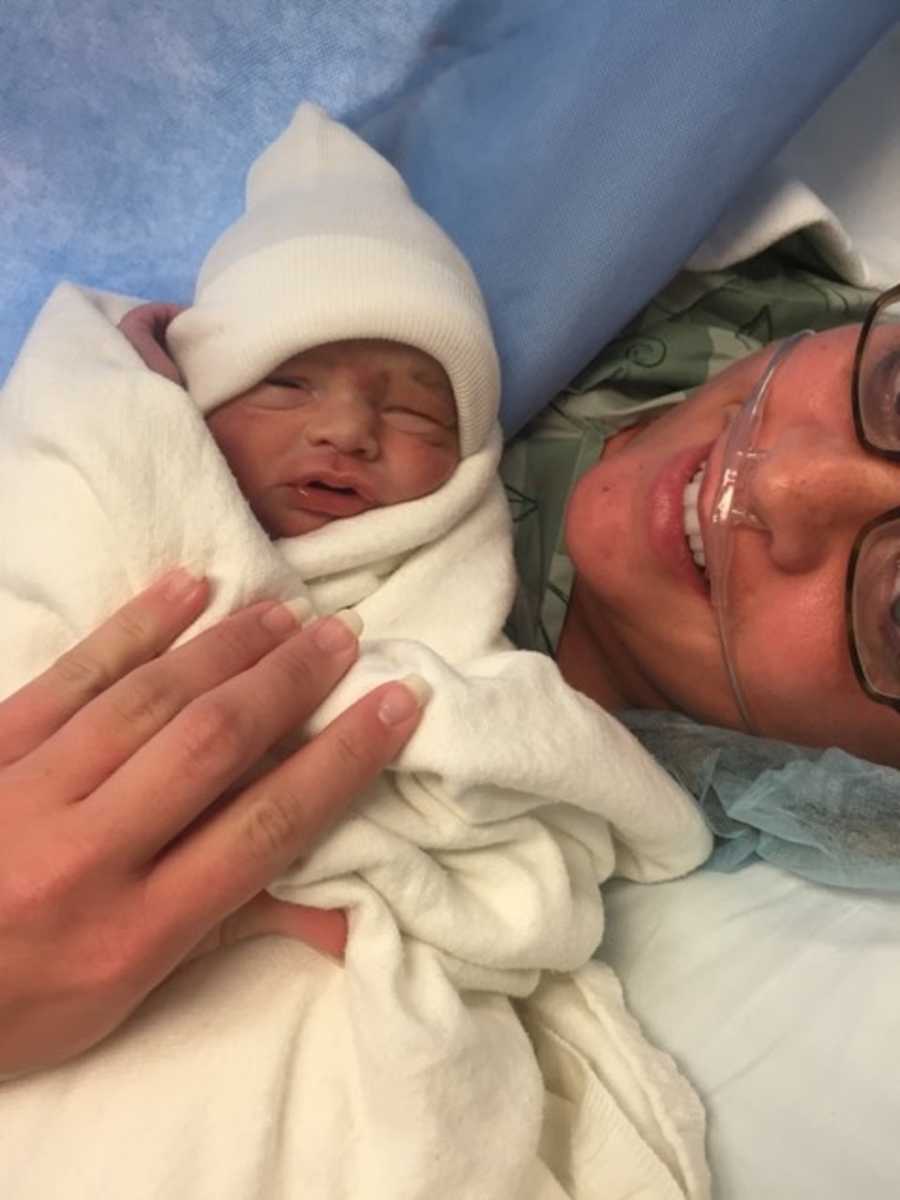
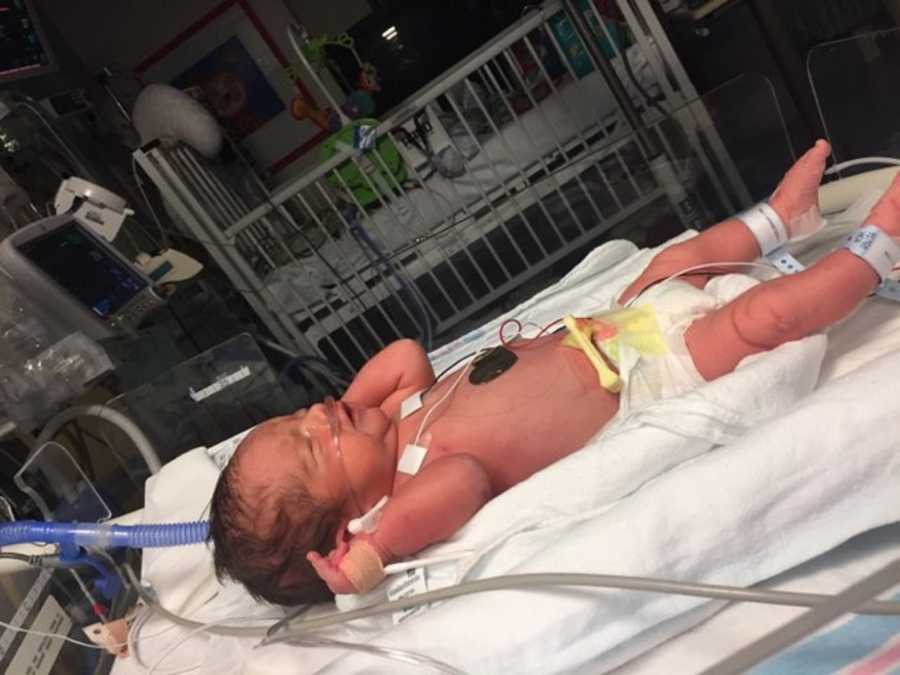
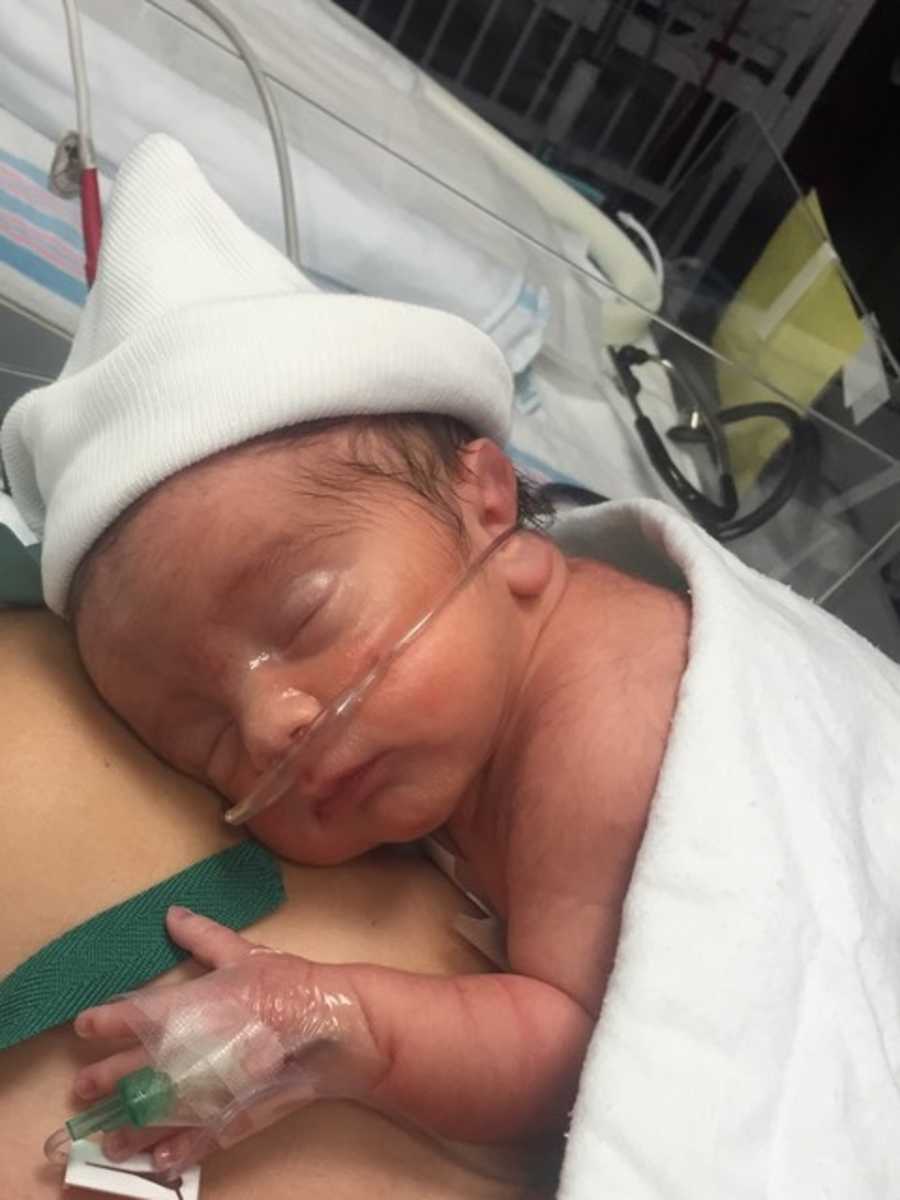
Around 6 months of age, I mentioned to his pediatrician that he was mainly using his left hand and I asked if that was normal. He wanted us to get it checked out. After doing X-rays, we knew nothing was or had previously been broken, so we were sent to a nerve specialist. They stuck needles in his right arm and hand to see if he had any feeling. He did. That’s when the word ‘stroke’ was first mentioned to us. The doctor noticed he kept his right thumb tucked in his fist, which is a sign of a stroke in children and adults. We knew our baby had not had a stroke. He never had a seizure and we would know if our son had a stroke. And babies don’t have strokes! Or so we thought.
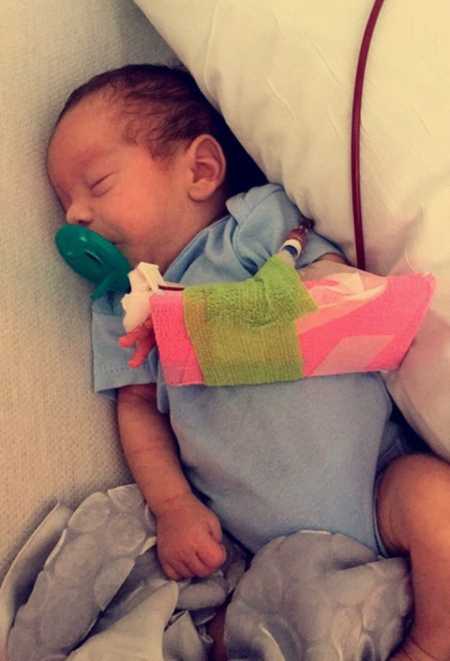
We agreed to an MRI to rule it out. Only one parent was allowed in the room. The other one waited outside in front of a big window where we could see him and he could see us. Towards the end, I looked at my husband, Dustin, and saw this horrible look on his face and the doctor talking to him. When Dustin made eye contact with me, I knew whatever the doctor was telling him was not good. My stomach dropped to the floor. I could tell the doctor was hesitant to tell me what he found. Not only did he suffer a stroke, it was a massive stroke. Big enough to kill a grown man. The doctor said his entire left side of his brain was damaged. There was no blood flow at all and every artery was blocked. I saw the image and it was horrifying. You could see the right side, it looked full and healthy. But the left side was black and empty. This could not be happening to us. The doctor was very shocked as well. Cannon was being his normal self — happy, smiling, talking, engaging with the doctor and responding well to him when he tested his eyes and hearing. He couldn’t believe the MRI.
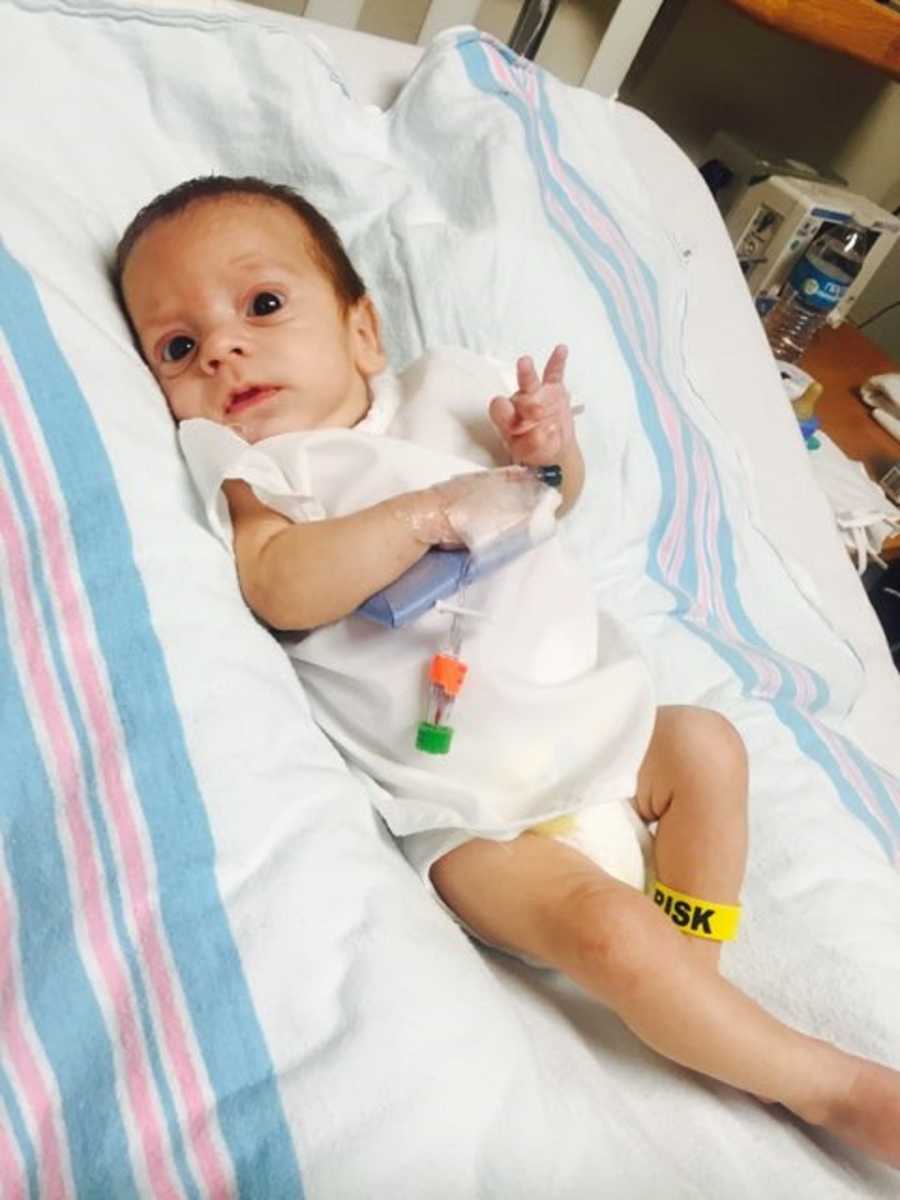
What was shown on the scan versus the baby that was in front of him didn’t match. Cannon shouldn’t be able to see, hear or talk. But he was. The only answer was God and all the prayers that went up for this sweet baby the entire pregnancy and afterwards. He was 14 months when we received an actual diagnosis. We were then sent to the Shriners Hospital where we received another diagnosis of mild cerebral palsy due to hemiplegia, which is muscle weakness or partial paralysis on one side of the body that can affect the arms, legs, and facial muscles. We immediately started therapy.
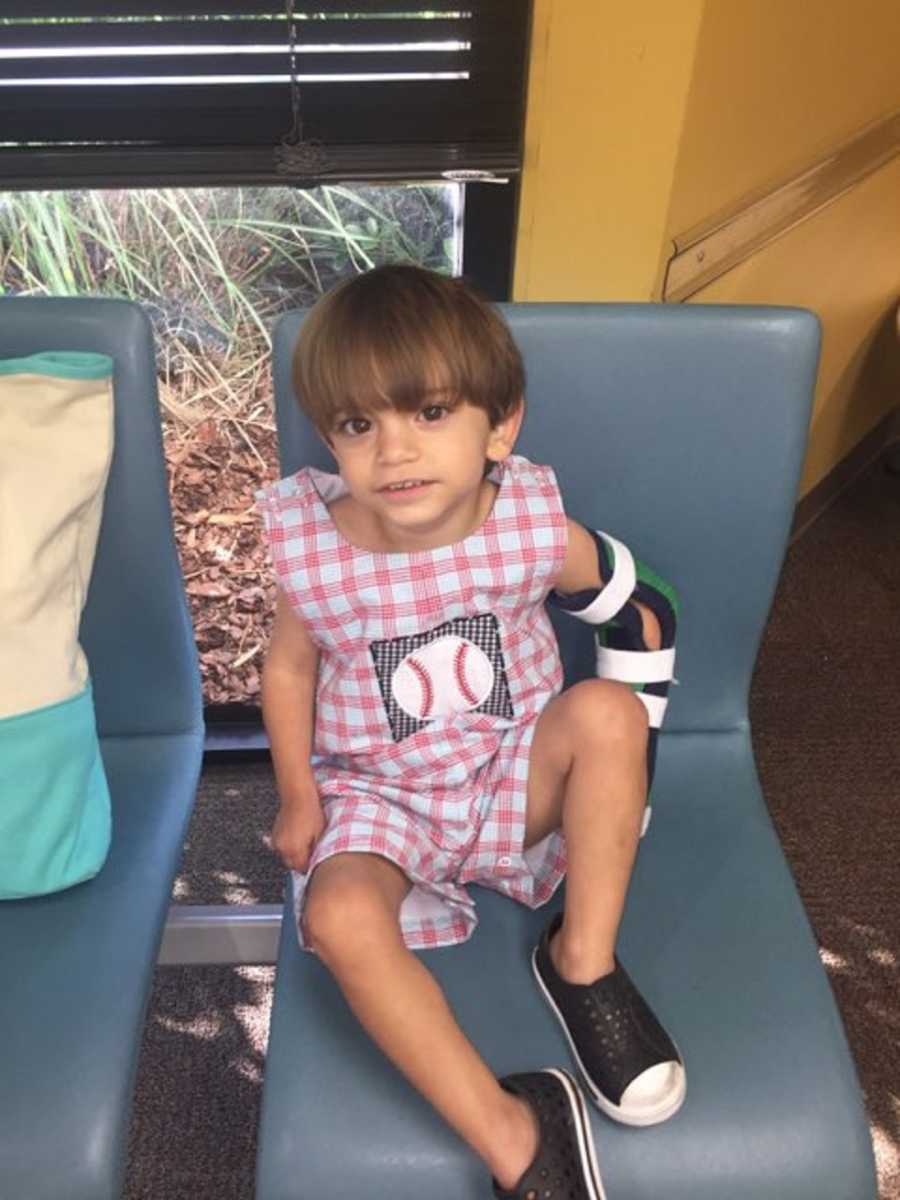
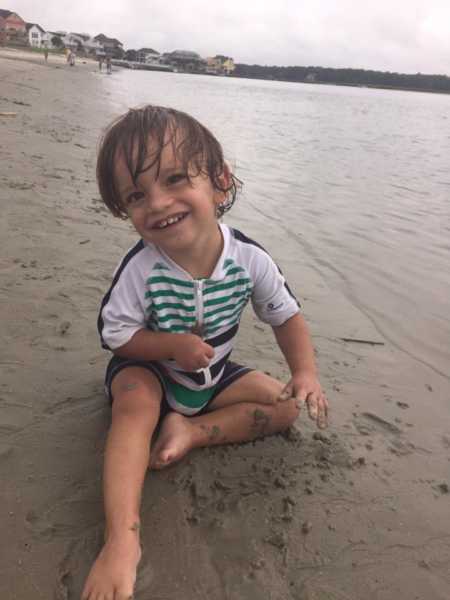
Of course, we both do a lot of research online and are part of several Facebook groups for parents of children with hemiplegia. I read a book called ‘The Brain That Changes Itself’ about a therapy program called Constraint-Induced Movement Therapy (CIMT), where they cast his left arm and hand to try and re-wire the brain so it knows it can also move the right side. The left side of the brain controls the right side and right side controls the left. Research shows that the brain can create new pathways in order to make up for what the left side can’t do. My employer has always been so understanding of the situation and they want what’s best for Cannon. They are very understanding of his therapy appointments and were more than happy to allow me to go on this amazing journey with him.
Since my husband works full time as well and we have an 11-year-old that needs to continue school, my mom has graciously come with us and has stayed the whole time. It’s has been great with her support here to help us both. We are on our last week and have already seen great improvements. For the first time, he was able to feed himself with his right hand and pick up small objects. We are working on throwing a ball now.
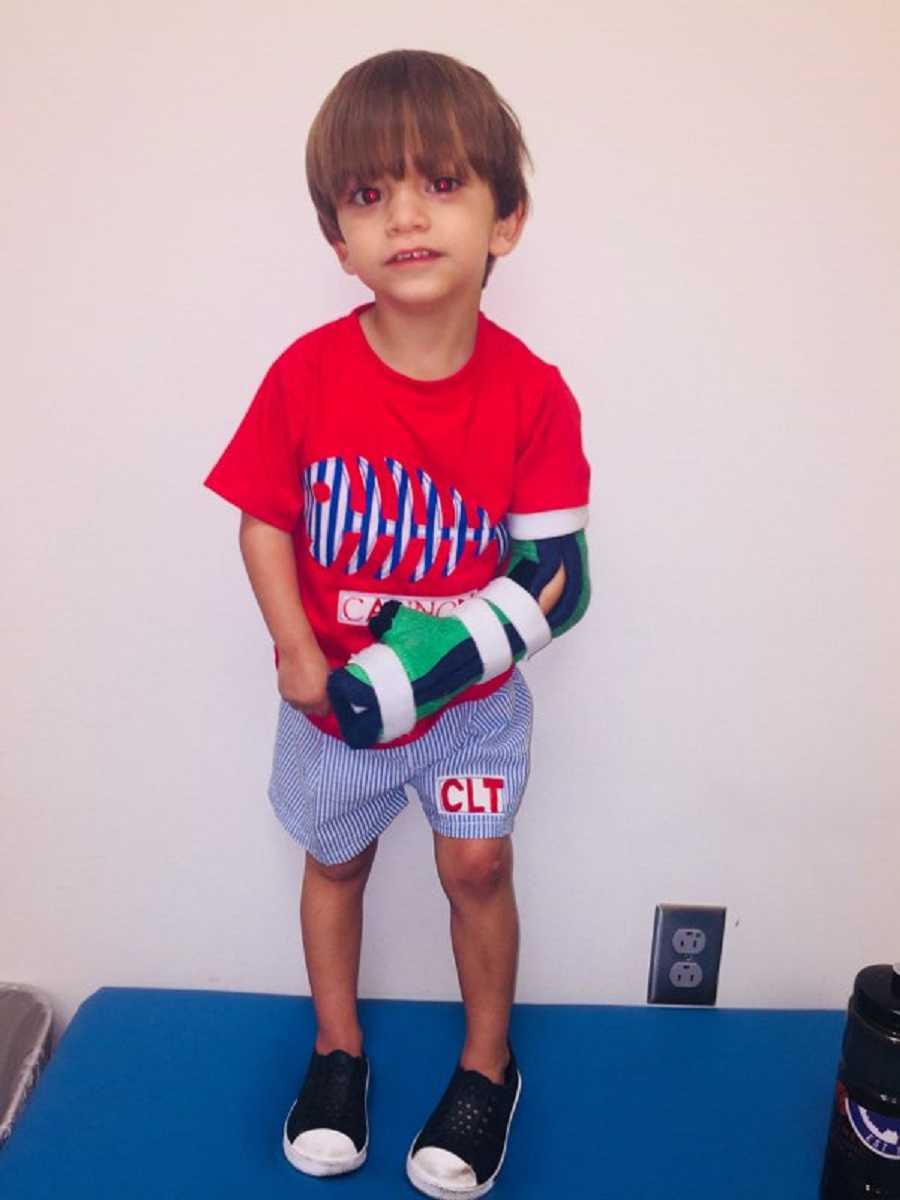
We as parents want the very best for our children. We are going to give Cannon every opportunity to beat the odds. We recently just shared his story with our friends and community and several people were shocked. They had met him and never knew he had cerebral palsy or a stroke. He is as wild and busy as an average 2-year-old. I think having an older brother has helped him more than anything. Landon is able to get Cannon to do a lot as Cannon wants to be just like him. He looks up to Landon and they both adore each other.

Since May is pediatric stoke awareness month, I would tell all parents to follow your gut. Children don’t normally show a dominant in hand preference until around age 3. If you notice a young baby favoring one hand over the other, get your doctor’s opinion. Also, if one hand is always kept in a fist or the thumb is tucked in, be aware. The sooner you start therapy and get started with medical issues, the better. Since Cannon’s stroke is believed to have been in the womb, we never saw the actual stroke. We never noticed seizures so that’s also something to look for once the child was born. Also, never blame yourself. Women who have had a great pregnancy with no morning sickness or complications at during pregnancy or delivery have children that have suffered a stroke. It is not your fault and it was something that I blamed myself for. It took several doctors telling me that it wasn’t my fault before I believed it. Contrary to what most people believe, strokes can, will and do happen in children, infants and unborn babies.”

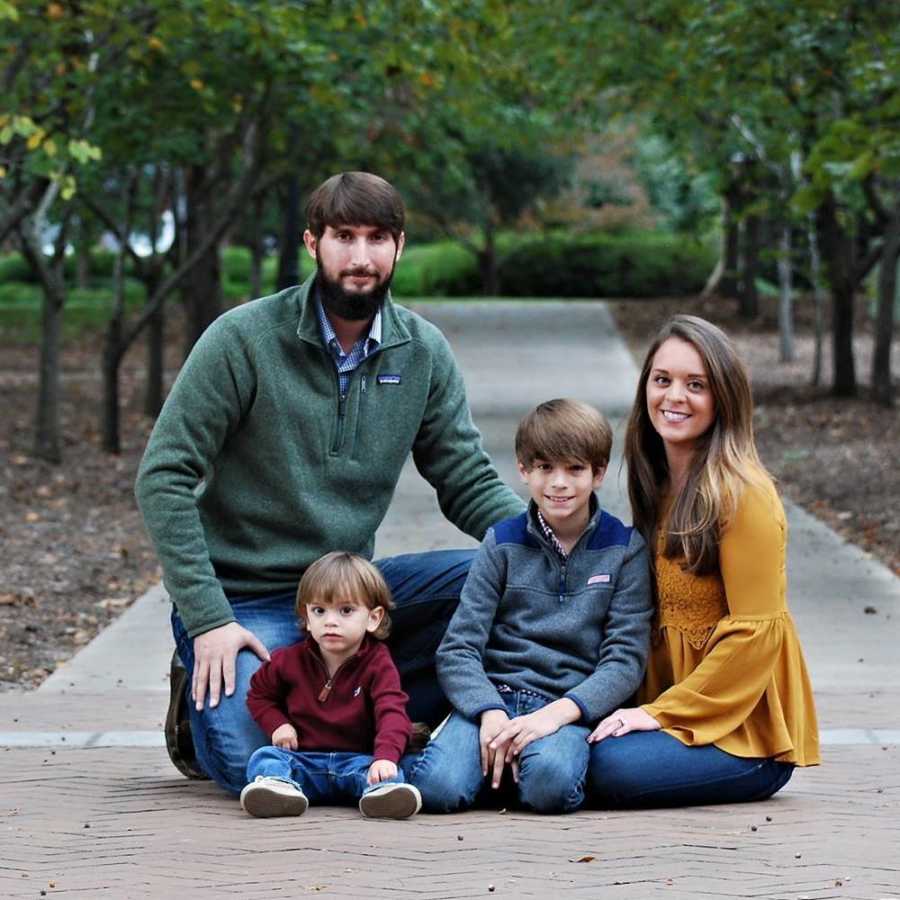
This story was submitted to Love What Matters by Denise Tedder of Hartsville, South Carolina. Submit your own story here, and subscribe to our best stories in our free newsletter here.
Please SHARE this article with your friends and family to raise awareness about pediatric strokes!

